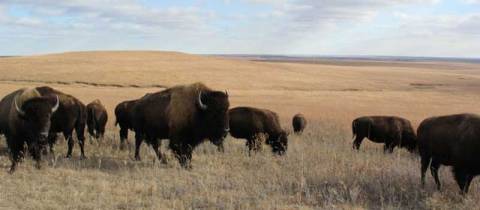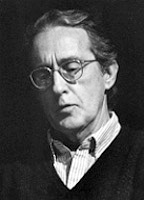On “Bread” and Baking
March 18, 2011
I love baking bread and pizza. I make my own dough and everything is done by hand — from the starter to the kneading and shaping.
Back in the late 1980s, I contemplated going to apprentice with the famous French boulanger, Lionel Poilâne. I still fantasize about opening a bakery/pizzeria.
My good friend Mark Herrera, who lives in San Francisco, also loves to bake bread. We often swapped recipes and shared stories of our bread baking. Once he shared with me a starter that had been in his family for years.
I loved the idea of sharing starter over a long distance and this idea became the starting point for a poem called, “Bread,” which was published in the journal Earth’s Daughters in 1999. Here is my poem,
“Bread”
“Christ may have risen all at once, the gospel according to Betty Crocker seems to say, but flour and yeast and people made of dust require successive chances to reach their stature” —Garret Keizer
He takes the bread from the oven, pausing
midway between the bread board and cooling rack,
absorbing the gluteny scent through crusty skin
–the color of a child’s arm
after a long hike on a summer’s day.
She says, “I have a marvelous sourdough starter,
passed on to me from a cousin who ran a bakery–
I can bring it to you.”
One pinch of starter travels two-thousand miles,
five hours through adventure, through altitude,
the acrid odor filling the cabin of the plane.
“It makes a bread that Jesus would be proud to call body.”
“Just a pinch?” she asks. “How can you deny me?”
She says that not to let her test it is tantamount to lack of love.
He gives in, just to see her face grow sanguine and lustful.
He once baked thirteen loaves for a homeless shelter;
then, nervous over numerology, he baked a fourteenth.
He couldn’t remember which one had been the offending loaf,
so he started all over again. This time he scored each one
with a distinguishing mark using the blade of a sharp knife.
In the bread bowl, he mixes flour, water, salt.
Kneads, lets it ferment. Kneads again, pulling and folding,
folding and pulling, lets it come into fullness.
Then lifts it into the oven, from where it will emerge
so finely crusted, so evenly textured, so giving of itself.
Bread that cries, when placed in her mouth,
“Eat me and you will never die.”
–Scott Edward Anderson, Earth’s Daughters, Issue 54, 1999
On Bison, Bluestem, and “Osage Moon”
March 5, 2011

If you’ve never seen a bison up close then you can’t know how big they are: massive wedge-shaped heads, calling to mind an anvil or the head of a maul, and bodies that look like what you’d get if you crossed a cow with a moose.
So imagine hiking through the tall grass prairie and rounding a bend to find a whole head of these prehistoric-looking beasts, staring and snorting at you on the open plain. Awestruck is the word that comes to mind. And that was me in the mid-90s at the Tallgrass Prairie Preserve in Pawhuska, Oklahoma.
I was there with Annick Smith, helping edit her book, Big Bluestem: A Journey into the Tallgrass, which she wrote for The Nature Conservancy and Council Oak Books.
We spent a lot time out on the prairie, when we weren’t working on drafts of the text at the big farm table in the ranch house. We walked in the bluestem, sometimes with experts, sometimes alone, and always struck by the power and beauty of the landscape and the ecosystem.
One night, after we’d stopped wrestling over sentences, put the manuscript to bed, and all was quiet on the plain, I stepped outside onto the porch to take in the night sky. The sky was huge — Montana has nothing on Oklahoma skies — and the stars were so bright and plentiful, they formed an opaque glistening broken only by a chalk white moon.
Here is my poem, “Osage Moon,” which appeared in The Cortland Review in 2002:
Osage Moon
The moon |
–Scott Edward Anderson, The Cortland Review
Solitude & Sincerity: RIP John Haines, 1924–2011
March 4, 2011
In the spring of 1997, I was living in Anchorage, Alaska, and was invited by the University of Alaska Anchorage to put together a program for their annual Writing Rendezvous conference.
I thought about the fact that I was in Alaska and we were coming to the close of a century and that poetry seemed to be at a crossroads.
And then I thought about John Haines. Any panel on poetry in Alaska must feature John Haines, I thought. Haines was a kind of unofficial permanent poet laureate of Alaska.
Since moving there to homestead in 1947, Haines had crafted and composed poetry of great solitude and sincerity out of his Alaska experience.
Haines was pleased to join the panel, although he said something about being too old to be of interest to the audience. Then I told him the panel would be rounded out by a young spoken word poet and an Alaska Native woman poet. He got a spark and became more interested in the prospect.
I don’t remember much about the panel — and I confess I don’t have my notes at hand. It was called “Poetry at the Edge of the Millennium” or somesuch. I do remember the panelists were engaged with each other and engaging to the audience.
And I recall that Haines stirred up a bit of controversy on the panel talking about spoken word versus conventionally printed poetry. That was pretty typical for the poet.
“He was a cantankerous, insufferable, unbendable old bastard but he was a damn good writer,” longtime friend John Koolstra told the Fairbanks Daily News Miner. “He is Alaska’s best writer. He was a standout.”
So when I heard that John Haines died last night in Fairbanks at the age of 86, I thought about his poetry.
From his isolated cabin above the Tanana River in Alaska’s Interior, he learned “to make things for myself, to build shelters, to weave nets, to make sleds and harnesses, and to train animals for work. I learned to hunt, to watch, and to listen.”
And there he crafted poems out of a spiritual wilderness where his solitary imagination confronted existence without the comforting illusions of society (to paraphrase poet Dana Gioia).
Here is John Haines’ poem “Fairbanks Under the Solstice”
Slowly, without sun, the day sinks
toward the close of December.
It is minus sixty degrees.
Over the sleeping houses a dense
fog rises—smoke from banked fires,
and the snowy breath of an abyss
through which the cold town
is perceptibly falling.
As if Death were a voice made visible,
with the power of illumination…
Now, in the white shadow
of those streets, ghostly newsboys
make their rounds, delivering
to the homes of those
who have died of the frost
word of the resurrection of Silence.
–John Haines



